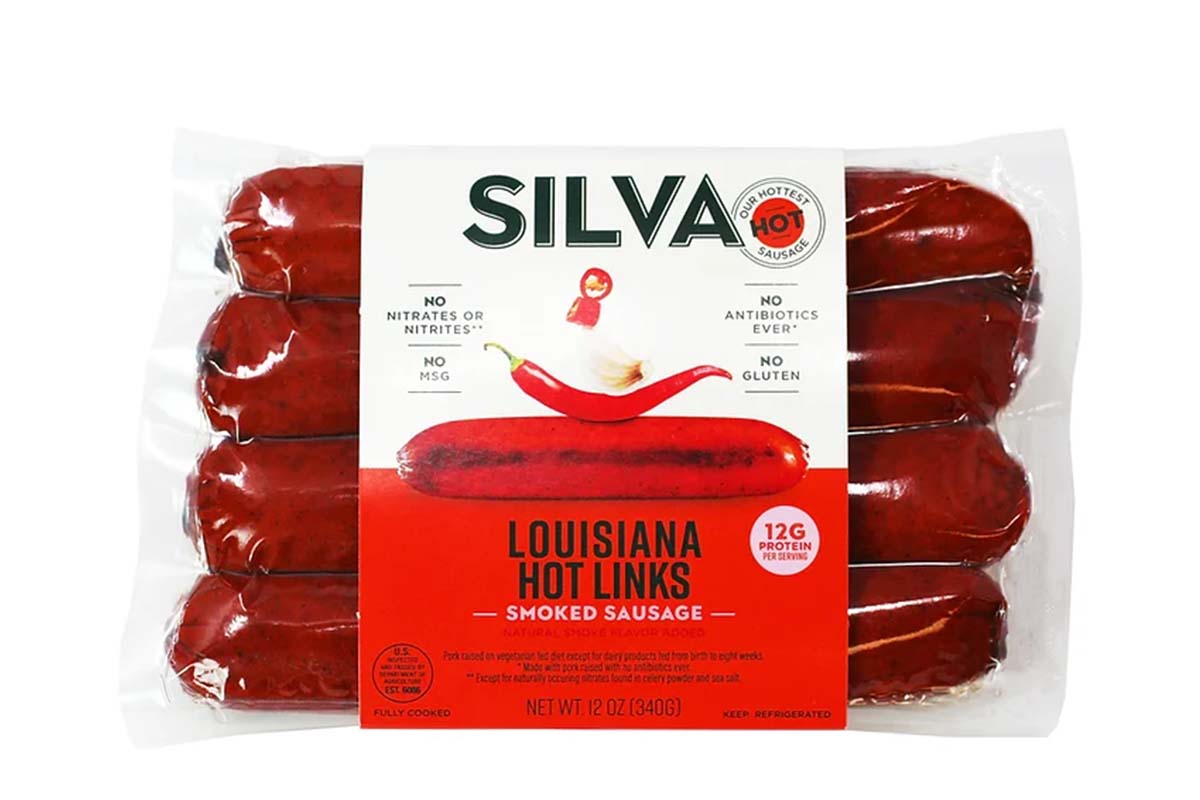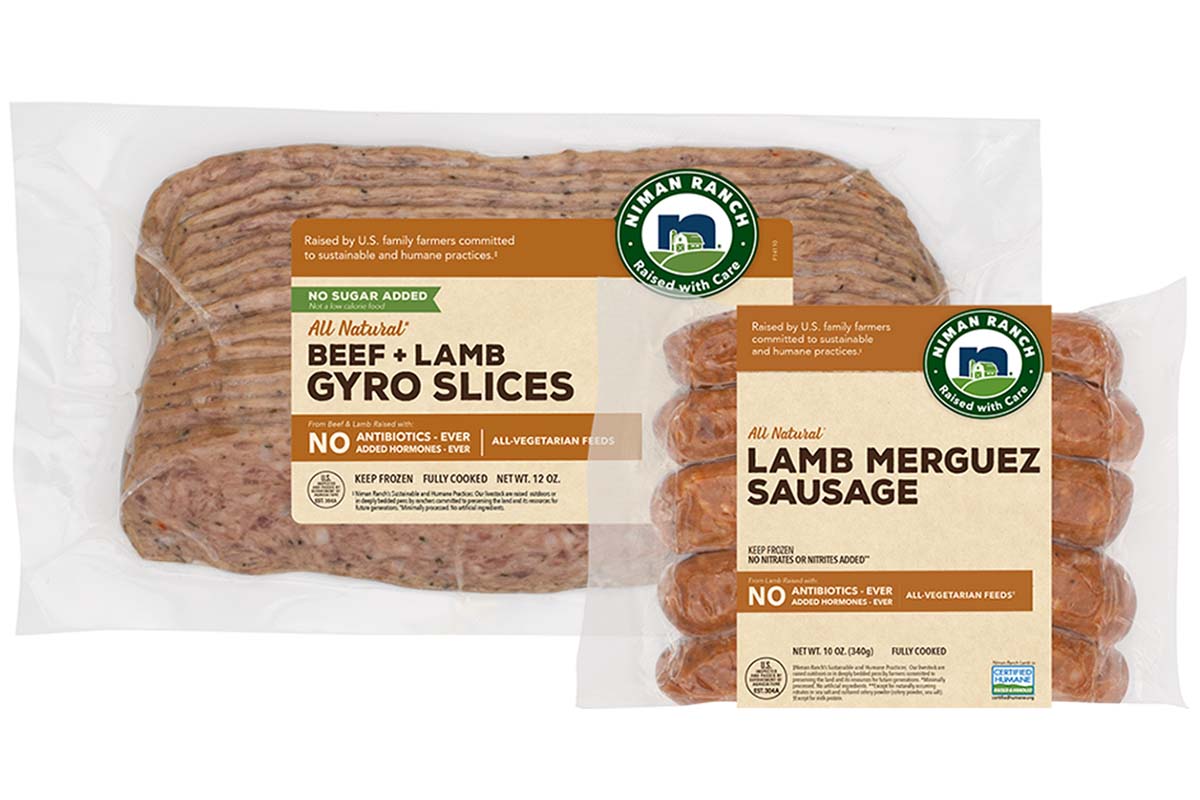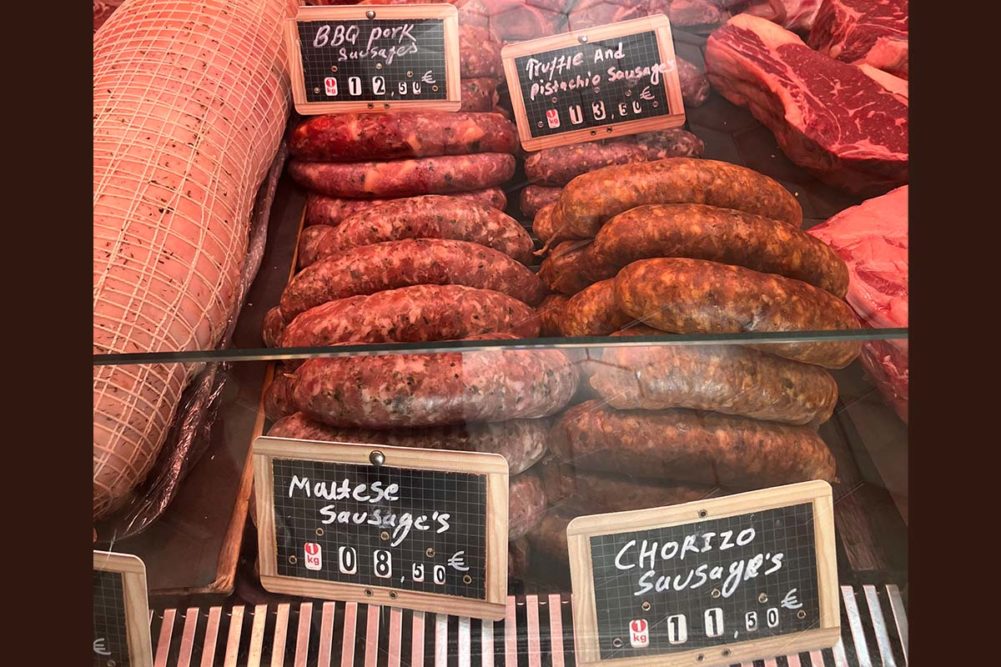Sausage making is one of the oldest prepared foods processes, as curing, fermenting and smoking extend the shelf life of animal protein, a critical requirement prior to commercial refrigeration. Sausage making is also an attractive business to butchers because it’s an efficient use of meat trim. This is something which not too long ago may have been frowned upon by consumers, but today is referred to as upcycling, and it’s a booming food trend. Blend in some premium inclusions — everything from fruit and vegetable bits, to diced cheeses and ancient grains — and you’ve got some specialty sausages that are featured everywhere from fine dining to farmers’ markets.
One of the most popular sharing plates at La Bande, San Francisco, for example, is spinach and chickpea blood sausage. Dutchy’s, Plantation, Fla., hand crafts traditional South African boerewors using beef, pork and beef, or lamb, and serves it with jalapeno jam, among other South African specialties, providing clientele with authentic flavors from more than 8,000 miles away.
These sausages are part of the booming US specialty foods industry, which neared $194 billion in 2022, up 9.3% from 2021, according to the Specialty Foods Association (SFA), New York. It’s estimated that sales reached $207 billion at the end of 2023. Meat, poultry and seafood were the combined number-two category, after chips, pretzels and snacks.
The SFA defines specialty foods as those that exemplify quality, innovation and style in their respective categories. Their specialty nature is derived from a combination of some or all of the following qualities: originality; authenticity, ethnic or cultural origin; specific processing or ingredients; limited supply; distinctive use of extraordinary packaging; and/or specific channel of distribution or sale.
Sausages may be formulated to fit many of these criteria. Processors — big and small — are getting on board by differentiating their comminuted meaty links with ingredients that provide value and command a premium price.
Exploring flavor
Today’s consumers have started viewing sausages as a convenient way to explore new flavors, even species. The only commitment is to a single link.
“Sausages are a platform for interesting flavors in a familiar format,” said Denise Purcell, vice president of resource development for SFA. “When times are tough, people start treating themselves, and ‘specialty foods,’ including premium sausages, are the perfect way to counteract what’s going on these days.
“The resilient specialty food industry continues to thrive despite weathering challenges since 2020,” Purcell said. “While food inflation has impacted the market in the past couple of years, that is stabilizing, and the industry is poised for the future with several positives in place. Consumers have more retail channels in which to purchase specialty foods, foodservice is rebounding and makers are innovating with sourcing, ingredients and promotion.”
Global flavors are showing up everywhere, according to Purcell. It’s all about elevated convenience. Sausages provide the ideal vehicle for global flavors and ingredients, as the casing literally keeps all of the ingredients intact. And, seeing is believing. Inclusions need to be authentic and real.
“Specialty foods can help bring global cuisine to your home kitchen,” Purcell said. “And consumers are telling us they want more short cuts. It’s all about maximizing pleasure and flavor, while minimizing stress and mess. And at the same time, experimenting with food and flavor for taste but also for a richer, cultural experience.”
With the origins of sausages rooted in the traditions of most countries, flavorful links have become an attractive format for exploring global cuisine. The National Restaurant Association’s “2024 What’s Hot Culinary Forecast” shows that classic comfort foods are a safe way for consumers to sample unique ingredients and flavors from other regions, both domestic and international sausages fit the criteria. After all, what’s more comforting in America than “baseball, hot dogs, apple pie and Chevrolet?”
Sausages may even be designed to fit the “healthy” trend. Hillshire Farm, a brand of Tyson Foods Inc., Springdale, Ark., for example, recently rolled out Harvest Blends. Available in smoked uncured Polska kielbasa and smoked sausage, Harvest Blends combine chicken and pork with quinoa, onion and bell pepper.
Another box that many sausages check is the trend in complex heat flavor profiles, which is gaining traction, according to the 2024 food forecast from Whole Foods Market, Austin, Texas. The retailer identified Louisiana Hot Links from Silva Sausage Co., as an example. The Gilroy, Calif.-based sausage maker also produces Portuguese linguiça sausage, which is available in select Whole Foods stores. Linguiça is a pork sausage spiced with lots of garlic and identifiable pieces of red pepper and other chilis. It tends to be a coarse sausage and is often smoked.
Jamaican jerk sausage, on the other hand, is spiced pork sausage, but the spices are less about heat (capsaicin). They are more about warmth through the inclusion of cinnamon and nutmeg, often with a hint of brown sugar. Authentic Jamaican jerk sausage relies on the preparation process known as jerk, and in this instance, involves smoking the sausage over burning pimento wood.
Maltese sausage, also known as zalzett tal-malti, is a very salty ground pork product containing lots of visible parsley, which provides citrus notes. There’s also smoky flavor from paprika. Other common seasonings are herbs indigenous to Malta, including rosemary and coriander. The sausage is never cured or smoked.
 Source: Silva Sausage Co.
Source: Silva Sausage Co.Getting creative
There’s an entire world of sausage innovations just waiting to be discovered. Some are family-held secrets, while others are creative spins on traditional concepts.
D’Artagnan LLC, Union, NJ, offers five varieties of fully cooked chicken sausage, all starting with free-range chicken raised without antibiotics or hormones. The apple variety is made with apples, spices, and Calvados — a French apple brandy — for a sweet and savory taste that is enhanced by being lightly smoked.
There’s a variety with chunks of wild mushrooms and another enhanced with the full-bodied taste and aroma of real black truffles. You can see sun-dried tomatoes, olives and basil in the Mediterranean variety. And for those who prefer a little more kick, the Southwest link includes fire-roasted red peppers, along with ancho, chipotle, chili and jalapeno peppers with a touch of cilantro.
Brooklyn Cured LLC, New York, has a black truffle pork sausage, too. But it’s the company’s Italian wedding soup sausage that has a fan club. This sausage starts with a natural sheep casing that gets packed with a blend of seasoned pork, diced carrots, spinach and imported sheep’s milk pecorino cheese.
The company likes to use a variety of species to add value and a premium positioning, deeming the sausages “special.” The duck fennel sausage is described as “a four-star sausage worthy of a special occasion, but it also fits right in on a backyard grill. It’s seasoned with toasted fennel seed, garlic, port wine and a hint of pomegranate molasses.” The spicy lamb sausage, also known as merguez, is seasoned with cumin, caraway, red wine and garlic.
Westminster, Colo.-based Niman Ranch, is growing its lamb line with merguez sausage and gyros. According to research from the American Lamb Board, Denver, gyros are America’s second favorite lamb dish behind lamb chops, and the amount of merguez sausage found on restaurant menus has increased 10% in just the past year. This lamb sausage appears in diverse dishes, from flatbreads to Scotch eggs to shakshuka.
Niman Ranch’s merguez sausage starts with natural lamb casings. Certified Humane lamb is sourced from select family ranchers in the Western United States, where the meat is known to have a sweet and subtle flavor. The sausages have a North African flavor profile, as the company uses a custom blend of three different paprikas, harissa and cumin. It’s flavorful, but not spicy hot.
 Source: Niman Ranch
Source: Niman RanchIngredient selection
There are many variables to consider when adding inclusions to meat. Appearance, flavor and texture must all be addressed.
While casings hold ingredients together, selection is important. Dried formats, especially fruits, vegetables and herbs, are often the best option to prevent color issues or moisture migration.
One key variable is the pH of the ingredient and the meat system, as changes in acidity impact color, taste and succulence. Succulence is related to fat and moisture retention. Too much purge during cooking will dry out the meat.
The moisture content of the meat matrix and the inclusions are also a key consideration. If there’s too much difference, moisture movement — inclusion to meat matrix or meat matrix to inclusion — may occur. Too much movement in either direction results in product breakdown. Fruits, vegetables and cheeses all have varying moisture levels that may impact the stability and cohesion of the system.
The moisture of cheese, in particular, can severely impact product quality. But because cheese is a great way to add flavor, color and even texture, it is an increasingly common inclusion.
Current clean-label trends are to use natural cheese, as it is minimally processed and typically contributes very simple ingredients to the final product, just milk, salt, culture and enzyme. With natural cheese, you get flavor and mouthfeel, but melt can be challenging, as the cheese particulate may lose its identity in the final cooked meat product. Restricted-melt process cheese and no- and low-melt natural cheeses, such as feta, halloumi, queso blanco and paneer, simply get creamier when heated. They do not ooze and lose form the way cheddar, mozzarella and Swiss do when added to meat products.
When it comes to including fruits and vegetables, dried and semi-moist bits and pieces are often the smartest choice. They may pull some moisture from the meat matrix, but just enough to become tender. They also don’t bleed as much as fresh fruits. These dried versions are often infused with a humectant to keep them soft but prevent moisture migration.
Unprocessed whole fruits can be quite challenging to work with, especially if the product is intended to have a lengthy refrigerated shelf life. When fresh fruit is used, it is best to freeze the product immediately after manufacture.
Some suppliers offer carefully crafted inclusions that can be manipulated to meet varied sensory targets. For example, neutral-tasting and colored apples may be formed into pieces that then get infused with the juice of other fruits, such as blueberry. This allows for a “made with real blueberry” claim, with both apple and blueberry appearing in the ingredient statement.
Alternative infusions
Depending on the product positioning in the marketplace, fabricated inclusions may make the most economic and shelf life sense. These are either lipid- or carbohydrate-based bits that are infused with flavor or even trivial tastes. Such inclusions come in a range of sizes. Size influences flavor distribution and visual effects in the finished product.
Meat products with lipid-based inclusions have been found to withstand panfrying, baking and microwaving. Higher-sugar content inclusions can undergo caramelization during dry-heat cooking, which may add an extra flavor dimension.
Such inclusions can also deliver smoke flavors, which add a touch of grill flavor without needing to grill. They may also be used to introduce alcohol flavors, such as beer, bourbon or wine.
There are endless ways to transform this ancient meat format into a trendy specialty food. Premium inclusions help.



